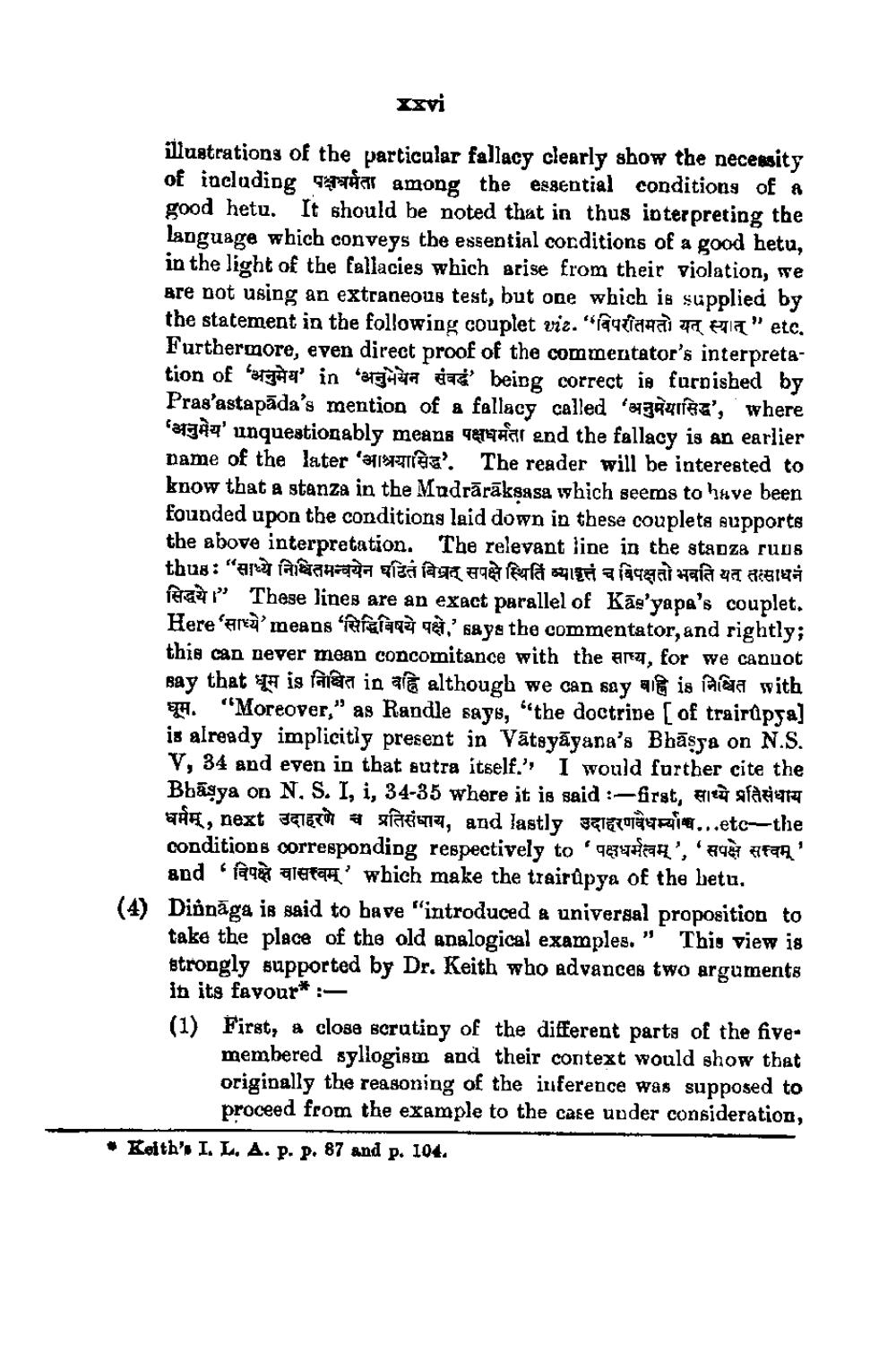________________
Xxvi
illustrations of the particular fallacy clearly show the necessity of including anal among the essential conditions of a good hetu. It should be noted that in thus interpreting the language which conveys the essential corditions of a good hetu, in the light of the fallacies which arise from their violation, we are not using an extraneous test, but one which is supplied by the statement in the following couplet viz. "autiana a TIT " etc. Furthermore, even direct proof of the commentator's interpretation of 'अनुमेय' in 'अनुमेयेन संवर्द्ध' being correct is furnished by Pras'astapāda's mention of a fallacy called 'Baguet', where (2942' unquestionably means that and the fallacy is an earlier name of the later ' da'. The reader will be interested to know that a stanza in the Madrārāksasa which seems to have been founded upon the conditions laid down in these couplets supports the above interpretation. The relevant line in the stanza ruus thus : “साध्ये निश्चितमन्वयेन घटित विघ्त् सपक्षे स्थिति व्यावृत्तं च विपक्षतो भवति यत् तत्साधनं secar” These lines are an exact parallel of Kās'yapa's couplet. Here aren' means 'Aigla qe qe,' says the commentator, and rightly; this can never mean concomitance with the art, for we canuot say that धूम is निश्चित in वह्नि although we can say वाह is निर्धित with
"Moreover," as Randle says, "the doctripe of trairūpga] is already implicitly present in Vātsyāyana's Bhāssa on N.S. V, 34 and even in that sutra itself.' I would further cite the Bbāsya on N, S. I, i, 34-35 where it is said :—first, ficù afdgere धर्मम् , next उदाहरणे च प्रतिसंघाय, and lastly उदाहरणवैधाश्च...etc-the conditions corresponding respectively to 'qazutaan', '
R AFA' and laget aintah' which make the trairūpya of the betu, Diönāga is said to bave "introduced a universal proposition to take the place of the old analogical examples." This view is strongly supported by Dr. Keith who advances two arguments in its favour* :(1) First, a close scrutiny of the different parts of the five
membered syllogism and their context would show that originally the reasoning of the inference was supposed to proceed from the example to the case under consideration,
Keith's I. L. A. P. p. 87 and p. 104.




